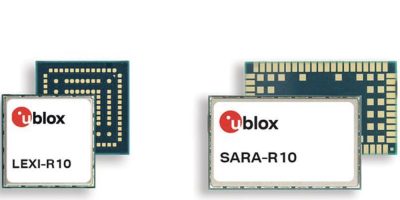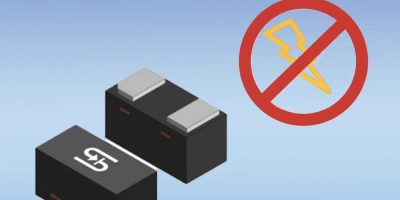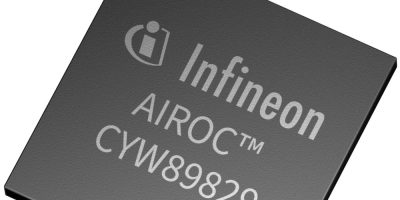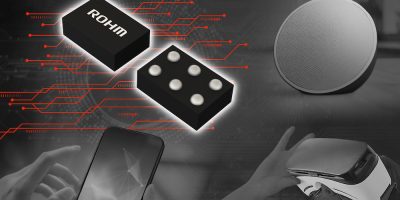u-blox has announced an expansion to its popular range of R10 products for the fast-growing LTE Cat 1bis cellular connectivity market. Predicted by analyst firm Techno Systems Research Co., Ltd to account for 43.6% of all non-handset cellular devices by 2029, LTE Cat 1bis is expected to be the best-selling cellular technology for the Internet of Things (IoT) for the next four to five years. The new modules strengthen u-blox’s LTE Cat 1bis portfolio, serving both the IoT and users migrating from legacy 2G/3G cellular connectivity.
The new u-blox LEXI-R10 Global provides an ultra-compact 16 x16mm LTE Cat 1bis solution that can be used worldwide in size-constrained IoT applications such as people or pet trackers and wearables. The LEXI-R10 Global is the world’s smallest single-mode LTE Cat 1bis module with indoor location and a US MNO certified core.
Meanwhile, the new SARA-R10 series brings the same capabilities as the LEXI-R10 Global to u-blox’s popular SARA form factor. With 2G and 3G sunsets continuing globally, the SARA-R10 offers product designers using 2G and 3G u-blox SARA modules a straightforward upgrade path to 4G LTE – the most widely available global cellular standard today and for many years to come.
The LEXI-R10 and SARA-R10 offer the option to embed an eSIM, and both modules also include an integrated Wi-Fi Sniffer, providing Indoor localisation via the u-blox CellLocate service based on both a Wi-Fi and cellular networks.
One of the variants is the SARA-R10M10, the world’s smallest LTE Cat 1bis module with embedded Global Navigation Satellite System (GNSS) capable of concurrent communication and tracking. It is the ideal solution for asset tracking and telematics applications that demand continuous connectivity as well as indoor and outdoor positioning anywhere in the world, thanks to the blend of GNSS, Wi-Fi scan and global LTE coverage. This module is also 50% smaller than u-blox’s previous LTE Cat 1bis combo, the LENA-R8M10.
The new u-blox R10 modules give product designers a 4G cellular connectivity solution for IoT applications that require medium data rates, worldwide portability, ultra-low power consumption and compact sizes.
Wearable
Taiwan Semi’s new ESD protection devices are optimised for high-density electronics
Taiwan Semiconductor has introduced a new series of new ultra-small ESD protection devices optimised for wearables and other high-density electronic products. All DFN0603-packaged models in the 3.3V and 5.0V TESDx Series exceed the 8kV IEC61000-4-2 20kV contact discharge standard as well as IEC6100-4-5 4A peak pulse current, with margin. TESDx Series devices utilise Taiwan Semiconductor’s proprietary clamping cells to prevent overvoltage damage from ESD and lightning on control, power and data lines. Additionally, their industry’s lowest capacitance allows for full USB 3.0 data rates without compromise.
Applications for the new 3.3V/5.0V ESD protection series include wearable products, portable medical and test and measurement instrumentation and IoT and IIOT devices. Other applications include consumer electronics, computing, networking, peripherals, USB3.X ports and any application where ESD protection is needed — and where size is a top-of-mind concern.
The TESDx Series offers three models to choose from:
• TESDH3V3B03P1Q0 3.3V/40W 0.2pF
• TESDL3V3B23P1Q0 3.3V/70W 17pF
• TESDH5V0B03P1Q0 5.0/100W 0.2pF
“For wearables and other high-density electronic products, the devices used for ESD protection should be as small and thin as possible, so our new DFN0603-packaged devices are an ideal choice,” said Sam Wang, vice president, TSC Products. “The 3.3- and 5.0-volt models in the series provide full-compliance electrostatic discharge and electronic fast-transient protection, with margin. When protecting high-speed data signals, they also offer extremely low capacitance to ensure that the signal integrity in the application remains within spec and uncompromised.”
https://www.taiwansemi.com/en/
Infineon expands its Bluetooth portfolio with eight new parts
Infineon has announced the expansion of its Bluetooth portfolio by eight new products in the AIROC CYW20829 Bluetooth Low Energy 5.4 microcontroller (MCU) family, featuring Systems-on-Chip (SoCs) and modules optimised for industrial, consumer, and automotive use cases. The high integration of the CYW20829 product family allows designers to reduce bill-of-material (BOM) cost and device footprint in a wide variety of applications, including PC accessories, low-energy audio, wearables, solar micro inverters, asset trackers, health and lifestyle, home automation and others. Product designers also benefit from Infineon’s development infrastructure and commitment to robust security, with support for secure boot and execution environments and cryptography acceleration to safeguard sensitive data.
The latest automotive part in the product family, the AIROC CYW89829 Bluetooth Low-Energy MCU, is ideal for car access and wireless battery management systems (wBMS) applications, due to its robust RF performance, long range and latest Bluetooth 5.4 features including PAwR (Periodic Advertising with Responses). The dual ARM Cortex core design of the chip family features separate application and Bluetooth Low Energy subsystems that deliver full featured support for Bluetooth 5.4, low-power, 10 dBm output power without a PA, integrated flash, CAN FD, crypto accelerators, high security including Root of Trust (RoT), and is PSA level 1 ready.
ROHM develops the industry’s smallest CMOS Op Amp for smartphones and IoT devices
ROHM has developed an ultra-compact 1.8V – 5V, rail-to-rail CMOS operational amplifier (op amp) – the TLR377GYZ. It is optimised for amplifying signals from sensors such as temperature, pressure, flow rate, used in smartphones, small IoT devices, and similar applications.
The size of smartphones and IoT devices continues to decrease – requiring smaller components. To accurately amplify small signals as needed in high precision sensing, op amps must improve low input offset voltage and noise performance while continuing to shrink the form factor.
The TLR377GYZ succeeds in balancing miniaturisation with high accuracy (which has been difficult to achieve with conventional op amps) by further evolving proprietary circuit design, process, and packaging technologies cultivated over many years.
Op amps’ input offset voltage and noise generation degrade amplification accuracy and can be suppressed by increasing the size of the built-in transistors – but at the expense of miniaturisation. In response, ROHM developed proprietary circuits which achieve a maximum offset voltage as low as 1mV without increasing the size of the transistors. In addition, proprietary process technology greatly reduces flicker noise, while ultra-low noise is achieved with an input equivalent noise voltage density of 12nV/√Hz by optimising the resistive components at the element level. Furthermore, the new product adopts a WLCSP (Wafer Level Chip Scale Package) with a ball pitch of just 0.3mm utilising original packaging technology. This reduces size by approximately 69% compared to conventional products and 46% over existing compact products.
About Smart Cities
This news story is brought to you by smartcitieselectronics.com, the specialist site dedicated to delivering information about what’s new in the Smart City Electronics industry, with daily news updates, new products and industry news. To stay up-to-date, register to receive our weekly newsletters and keep yourself informed on the latest technology news and new products from around the globe. Simply click this link to register here: Smart Cities Registration







